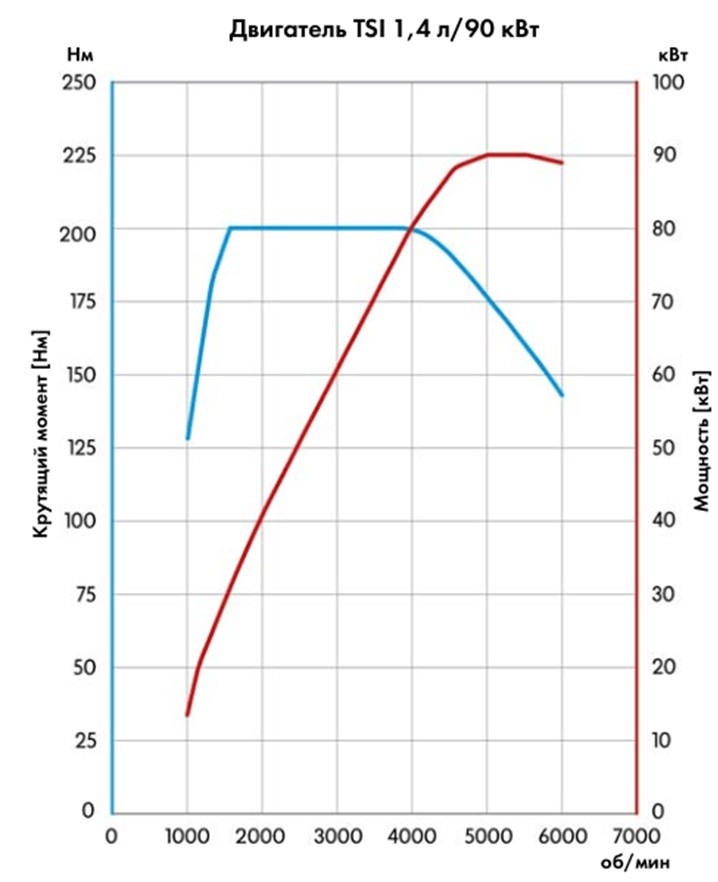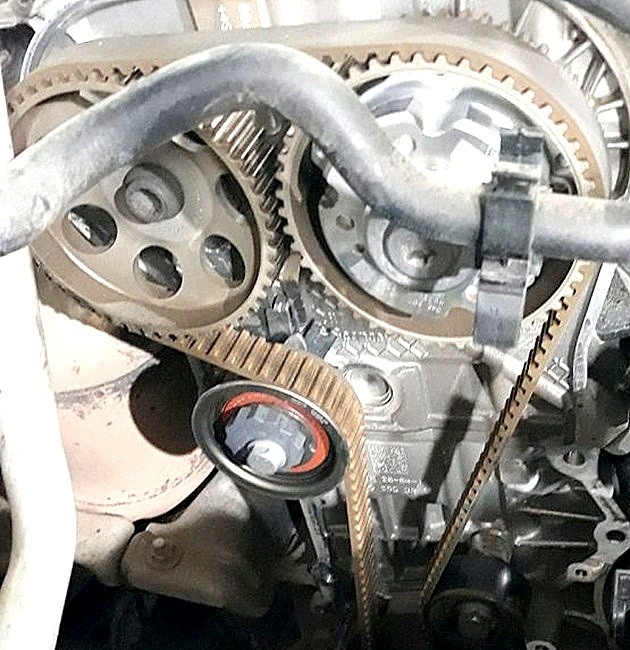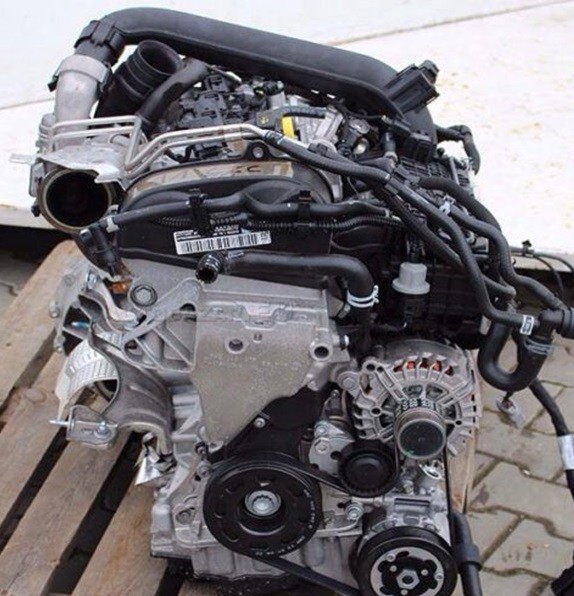
Volkswagen CZCA engine
Content
The well-known CXSA engine has been replaced by a new, more powerful ICE that meets modern environmental standards. With its technical characteristics, it fully complies with the EA211-TSI line (CXSA, CZEA, CJZA, CJZB, CHPA, CMBA, CZDA).
Description
In 2013, the Volkswagen auto concern (VAG) mastered the production of a power unit that replaced the popular 1,4 TSI EA111 series. The motor received the designation CZCA. It is appropriate to note that this sample is still considered an improved and moderately innovative version of the VAG engines of the EA211 line.
The power plant of the CZCA series with a volume of 1.4 liters is equipped with a large number of popular Volkswagen, Skoda, Audi and Seat models on the market. In the Russian market, Volkswagen Polo and Skoda Octavia, Fabia and Rapid, equipped with this engine, are most famous.
The motor is characterized by compactness, efficiency, ease of maintenance in operation.
Of the main features, it is worth noting deployed by 180֯ The cylinder head, which made it possible to integrate the exhaust manifold into it, the replacement of the timing chain drive with a belt drive and the use of materials that facilitate the entire design of the internal combustion engine.
CZCA 1,4 liter in-line four-cylinder petrol engine with 125 hp. with and a torque of 200 Nm equipped with a turbocharger.

Installed on cars of the VAG automaker:
- Volkswagen Golf VII /5G_/ (2014-2018);
- Passat B8 /3G_/ (2014-2018);
- Polo Sedan I /6C_/ (2015-2020);
- Jetta VI /1B_/ (2015-2019);
- Tiguan II /AD/ (2016- );
- Polo Liftback I /CK/ (2020- );
- Skoda Superb III /3V_/ (2015-2018);
- Yeti I /5L_/ (2015-2017);
- Rapid I /NH/ (2015-2020);
- Octavia III /5E_/ (2015- );
- Kodiaq I /NS/ (2016- );
- Fabia III /NJ/ (2017-2018);
- Rapid II /NK/ (2019- );
- Seat Leon III /5F_/ (2014-2018);
- Toledo IV /KG/ (2015-2018);
- Audi A1 I /8X_/ (2014-2018);
- A3 III /8V_/ (2013-2016).
It is impossible to ignore such innovative solutions as the improvement of the intake manifold. Now it has an intercooler. The cooling system has received changes - the rotation of the water pump is carried out by means of its own drive belt. The system itself became two-circuit.
The electrical part was not left without attention. The Bosch Motronic MED 17.5.25 ECU controls the entire operation of the engine, and not just the boost pressure.
Thin-walled cast-iron liners are pressed into the aluminum cylinder block. There are two pluses - the weight of the engine is reduced and the possibility of a complete overhaul has appeared.
Aluminum pistons, lightweight. The main disadvantage of this solution is their increased sensitivity to overheating. First of all, this is noticeable by the condition of the skirt, as in the sample shown in the photo. Floating fingers. From lateral displacement fixed with retaining rings.

The crankshaft is lightweight, with a stroke increased to 80 mm. This necessitated the use of lightweight connecting rods, which was embodied in the design.
The timing drive uses a belt. In comparison with the chain, the weight of the knot decreased slightly, but this turned out to be the only positive side of this decision. The drive belt, according to the manufacturer, is capable of nursing 120 thousand km, but in practice this is rare.
Experienced car owners recommend replacing the belt after 90 thousand km. Moreover, every 30 thousand km it must be carefully examined. A broken belt causes the valves to bend.
The cylinder head has two camshafts (DOHC), 16 valves with hydraulic lifters. The valve timing regulator is located on the intake shaft.
Fuel supply system - injection type, direct injection. Used gasoline - AI-98. Some motorists replace it with the 95th, which reduces the resource, reduces power and creates the prerequisites for engine failure.
For turbocharging, a TD025 M2 turbine is used, providing an overpressure of 0,8 bar. In the vast majority of cases, the turbine takes care of 100-150 thousand km, which cannot be said about its drive. It will be discussed in more detail in Chap. Weak spots.
The lubrication system uses 0W-30 (desirable) or 5W-30 oil. For Russian operating conditions, the manufacturer recommends using VAG Special C 0W-30 with approval and specification VW 502 00/505 00. Replacement must be done after 7,5 thousand kilometers. Oil pump from Duo-Centric, self-regulating oil supply.

Any engine has both positive and negative sides. Positives prevail in CZCA. The graph of the external speed characteristics of the motor presented below clearly confirms this.

The CZCA ICE is an almost new engine with major improvements in terms of improving technical and economic performance.
Technical specifications
| Manufacturer | Mlada Boleslav Plant, Czech Republic |
| Release year | 2013 |
| Volume, cm³ | 1395 |
| Power, hp from | 125 |
| Torque, Nm | 200 |
| Compression ratio | 10 |
| Cylinder block | aluminum |
| Number of cylinders | 4 |
| Cylinder head | aluminum |
| Fuel injection order | 1-3-4-2 |
| Cylinder diameter, mm | 74.5 |
| The piston stroke, mm | 80 |
| Timing drive | belt |
| Number of valves per cylinder | 4 (DOHC) |
| Turbocharging | turbine TD025 M2 |
| Hydraulic compensators | Yes |
| Camshaft adjuster | one (inlet) |
| Lubrication system capacity, l | 3.8 |
| Applied oil | 5W-30 |
| Oil consumption (calculated), l / 1000 km | up to 0,5* |
| Fuel system | injector, direct injection |
| Fuel | gasoline AI-98 |
| Environmental standards | Euro 6 |
| Resource, outside. km | 275 |
| Weight, kg | 104 |
| Location | transverse |
| Tuning (potential, hp | 230** |
* with a serviceable motor no more than 0,1; **up to 150 without resource loss
Reliability, weaknesses, maintainability
Reliability
There is no doubt about the reliability of CZCA. The engine has a decent resource and a large margin of safety.
A lot of talk in various forums is about the durability of the timing belt. Volkswagen concern experts argue that its replacement schedule is after 120 thousand kilometers and there is no need to reduce it.
This is partly confirmed by some car owners. So, Members from Kaluga shares his observations: “… changed the timing belt and plus the drive belt. Changed on a run of 131.000 km. I’ll tell you right away that you don’t need to climb there so early, you can see from the pictures that everything is clean there and the condition of the belt is on a solid 4, or even 5».

Krebsi (Germany, Munich) clarifies: “... the Germans on this engine do not change the timing belt before 200 thousand km. And they say that he is usually still in good condition. Factory replacement is not provided at all».
It’s clear with the Germans, but our motorists have a different opinion on this issue - after 90000 replacements and every 30000 inspections. Under operating conditions in the Russian Federation, this will be the most realistic and safe.
On the issue of increased oil consumption, there is also no unequivocal opinion. Problems are mainly faced by car owners who are trying to save on cheaper oil and do not comply with engine maintenance deadlines.
A motorist from Moscow, Cmfkamikadze, expresses the most common opinion about the engine: “… oil level. Dynamic fire! Consumption until 7.6 average in the city. Very quiet engine. When you stop at a traffic light, as if stalled. Yes, today, while cleaning the snow and walking around the car, it warmed up to 80 degrees. 5-8 minutes. Leisurely. So the myth about a long warm-up is destroyed».
The manufacturer takes timely measures to improve the reliability of the unit. For example, in the first batches of engines, problems were noticed in the mount of the valve timing regulator. The factory quickly corrected the defect.
The engine significantly exceeds the declared resource with an adequate attitude towards it. Car service workers have repeatedly noticed cars arriving at them with a mileage of more than 400 thousand km.
The margin of safety allows you to boost the engine up to 230 hp. s, but don't do it. Firstly, the motor was initially boosted by the manufacturer. Secondly, intervention in the design of the unit will significantly reduce its resource and compliance with environmental standards.
For those who have a power of 125 liters. with not enough, it is possible to perform a simple chip tuning (make a flashing of the ECU). As a result, the engine will become stronger by about 12-15 hp. s, while the resource remains the same.
Based on the reviews of experts and motorists on the 1.4 TSI CZCA engine, the only conclusion suggests itself - this engine from Volkswagen is quite practical, reliable and quite economical.
Weak spots
CZCA problem areas could not be avoided. But at the same time, it must be borne in mind that many of them are caused by improper operation of the unit, that is, the car owners themselves are responsible for their occurrence.
Consider the main problem node of the motor
tsya wastegate turbine, or rather its drive. Motorists often encounter jamming of the actuator rod. The problem can occur at any mileage. The reason is an engineering miscalculation in the design of the engine. Specialists-experts suggest that there is an error in the choice of gaps and materials of the assembly parts.
To prevent a malfunction, it is necessary to lubricate the actuator rod with heat-resistant grease and periodically (even while standing in traffic jams) give the engine full speed. Thanks to these two simple recommendations, it is possible to eliminate the souring of the rod and prevent costly repairs.
Another common weakness of supercharged internal combustion engines (CZCA is no exception) is increased oil consumption. The reason is not high-quality fuels and lubricants, primarily gasoline and not timely maintenance of the engine.
Poor quality fuel contributes to the formation of soot and, as a result, coking of piston rings and valves. The consequences are the occurrence of rings, loss of power, increased fuel and oil consumption.
Car owners who timely perform regular engine maintenance, as a rule, do not encounter an oil burner.
On older engines, fogging and even coolant leakage appear. In most cases, this is due to the plastic drying out - time takes its toll. The problem is solved by replacing the defective part.
The rest of the problems encountered are not critical, as they are rare, and not on every engine.
Maintainability
CZCA has a high maintainability. A simple design, cast-iron sleeves and a block device allow for restoration not only at car services, but also in garage conditions.
The engine is widely distributed in the domestic market, so there are no problems with finding spare parts. When buying, you need to pay attention to their manufacturer in order to exclude the possibility of acquiring a fake.
It is not recommended to use spare parts-analogues during repairs, especially second-hand ones. Unfortunately, some car owners do not pay attention to this recommendation. As a result, it is because of this that sometimes it is necessary to repair the engine again.
Why is this happening? The explanation is simple - analogues of components and parts do not always correspond to the necessary parameters (dimensions, material composition, workmanship, etc.), and it is impossible to determine the residual resource for used elements.
Before repairing the unit, it will not be superfluous to consider the option of purchasing a contract engine.


There are no problems with finding a seller of such motors. The price of the unit varies widely and starts from 60 thousand rubles. Depending on the completeness of attachments and other factors, you can find an engine of a lower cost.
The Volkswagen CZCA engine is long-term, reliable and trouble-free when all manufacturer's requirements for its operation are met.

